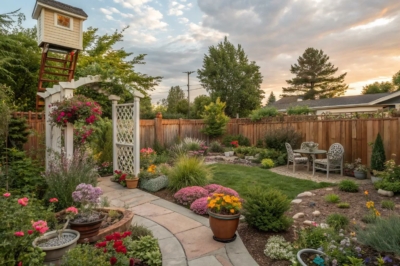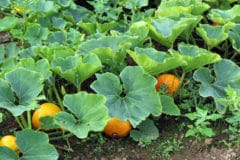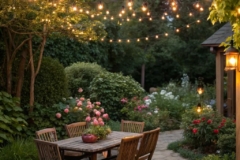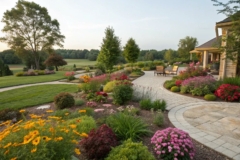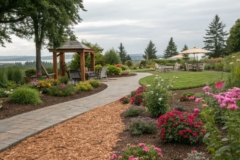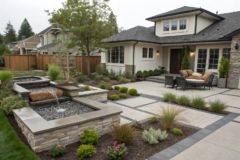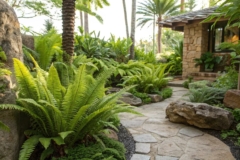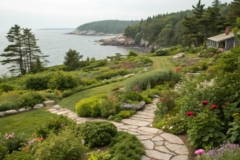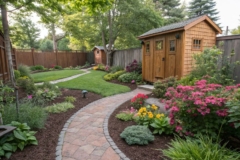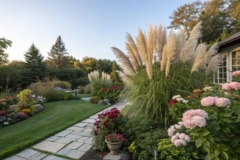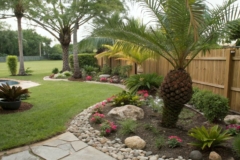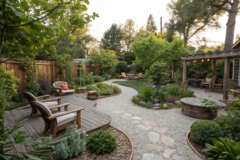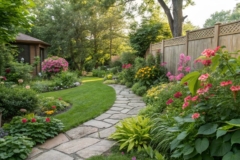1. Enhance with Edging
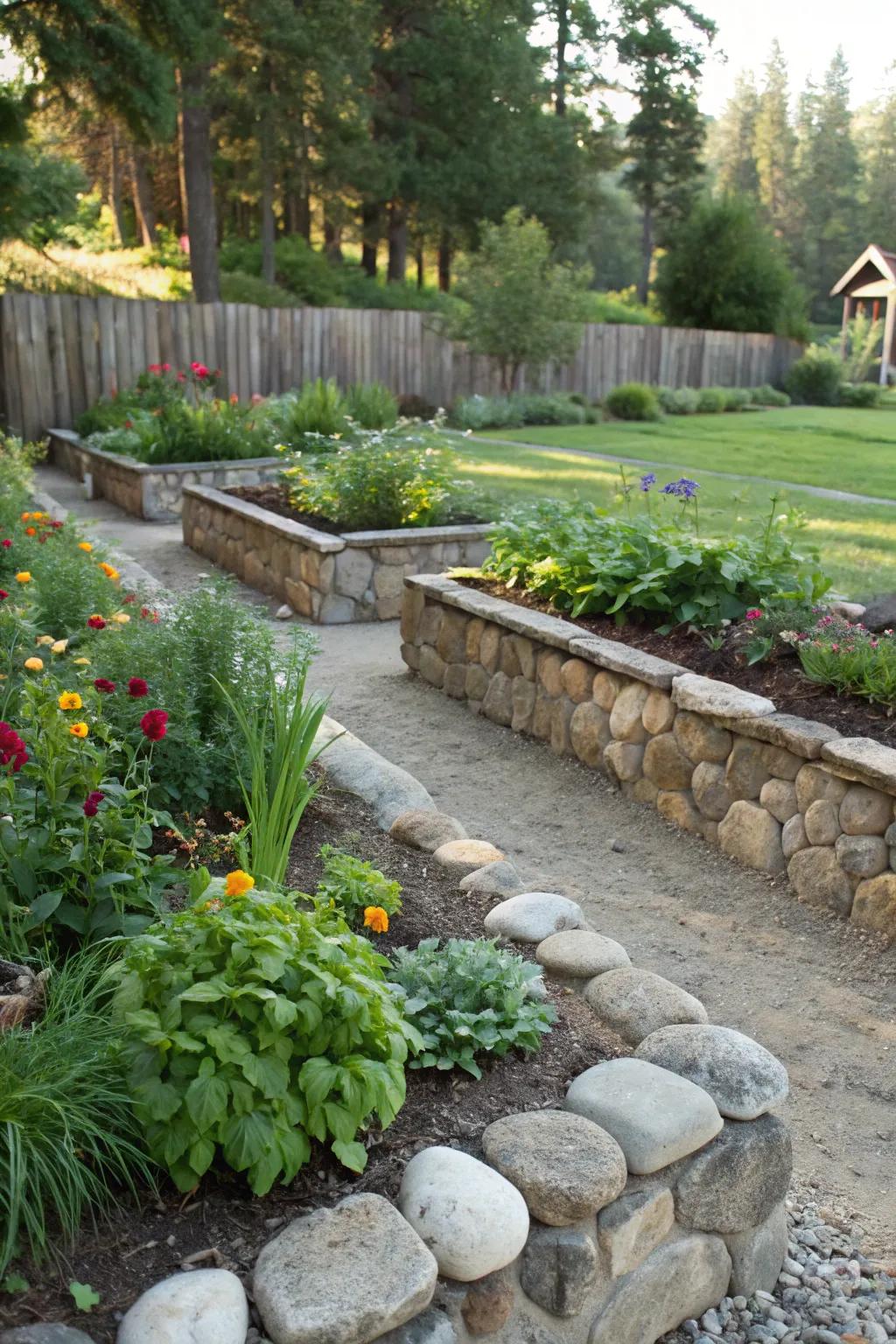
Edging adds definition and keeps everything in its place. Using simple materials like stones, I’ve created clean lines around my flower beds.
A few suggestions:
- Decorative Garden Edging Stones: Define your garden beds with elegant stones; enhance curb appeal effortlessly.
- Interlocking Lawn Edging Panels: Easily install interlocking panels to keep your flower beds neat and tidy.
- Flexible Landscape Edging: Create clean, beautiful lines in your garden with flexible edging solutions.
2. Enhance Curb Appeal
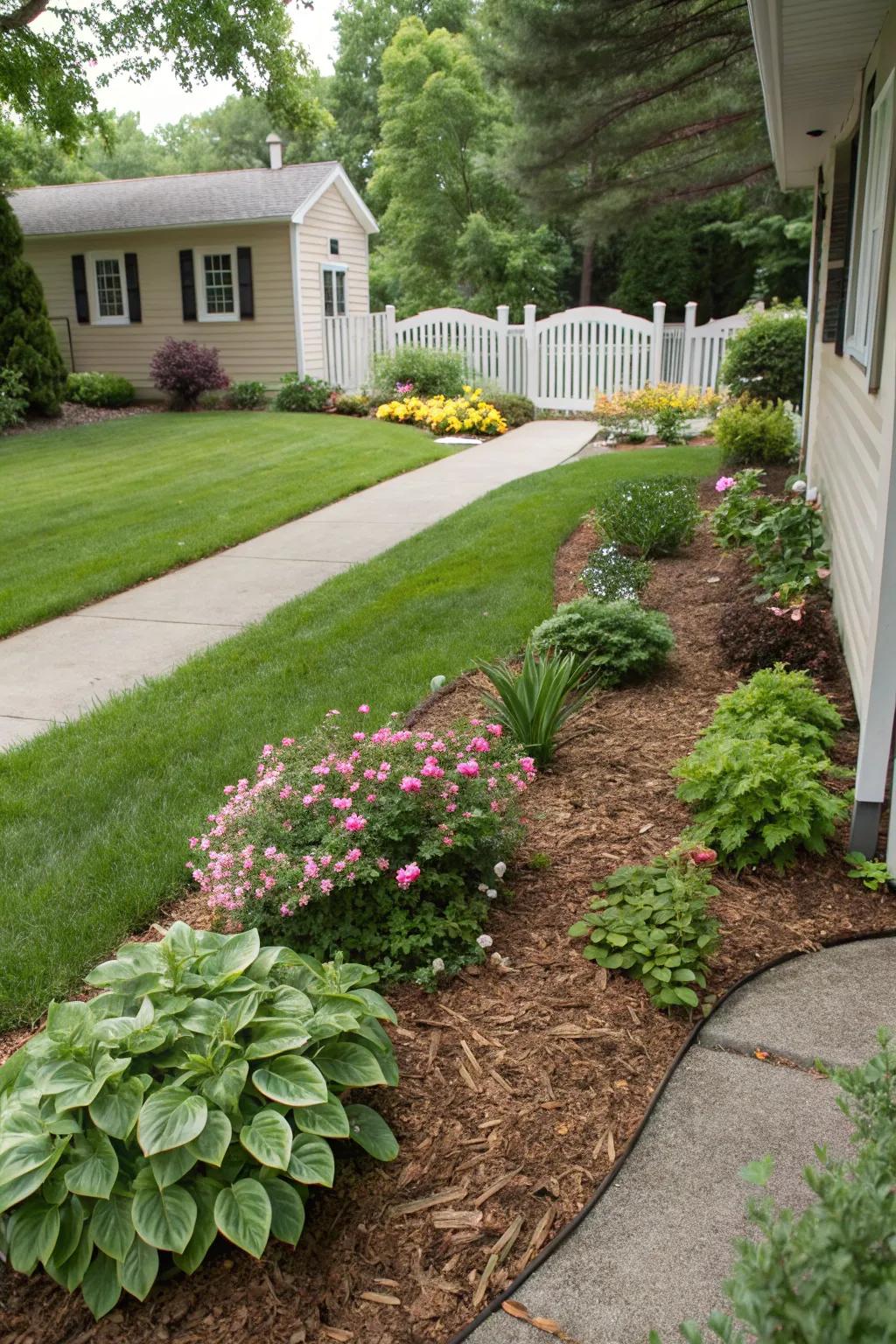
A few well-placed plants can significantly boost your front yard’s appeal. I’ve found that a mix of perennials and mulch can do wonders for curb appeal.
Maybe worth checking out:
- Perennial Flower Seed Mix: Boost your garden’s charm with a vibrant mix of perennials for lasting curb appeal.
- Organic Garden Mulch: Retain moisture and enrich soil while enhancing your garden’s look with organic mulch.
- Garden Edging Border: Define your garden bed neatly with durable, easy-to-install landscape edging.
3. Create a Rock Garden
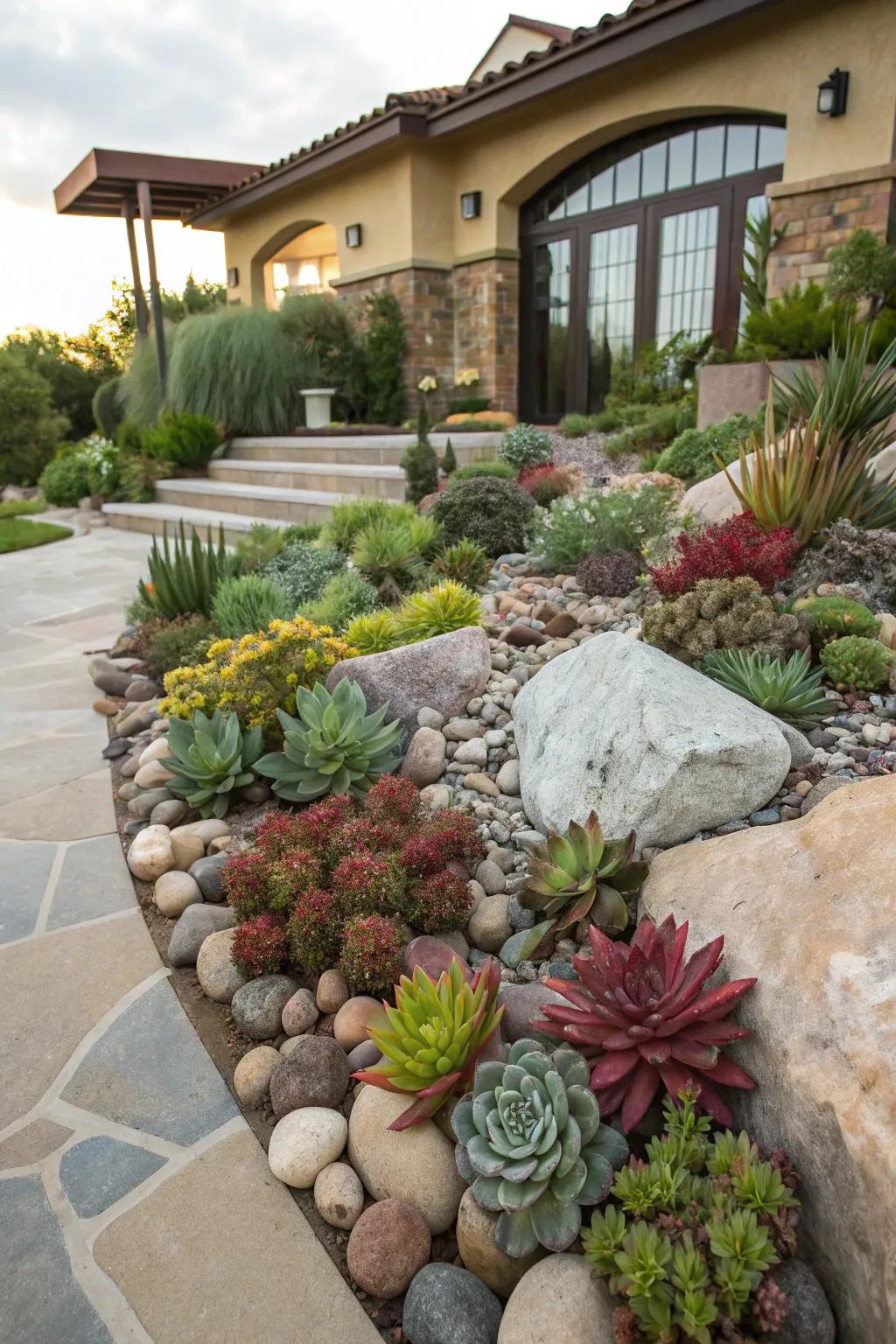
Rock gardens are a fantastic way to add texture and interest while keeping costs low. I’ve found that sourcing local stones not only saves money but also enhances the natural look of my garden.
Some ideas to consider:
- Decorative River Rocks: Enhance your garden’s beauty with these smooth, natural stones. Perfect for rock garden designs.
- Garden Succulent Plants Collection: Add variety and color with these easy-to-care-for succulent plants in your rock garden.
- Landscape Fabric: Use durable landscape fabric to prevent weeds and maintain moisture in your rock garden.
4. Build a Raised Bed
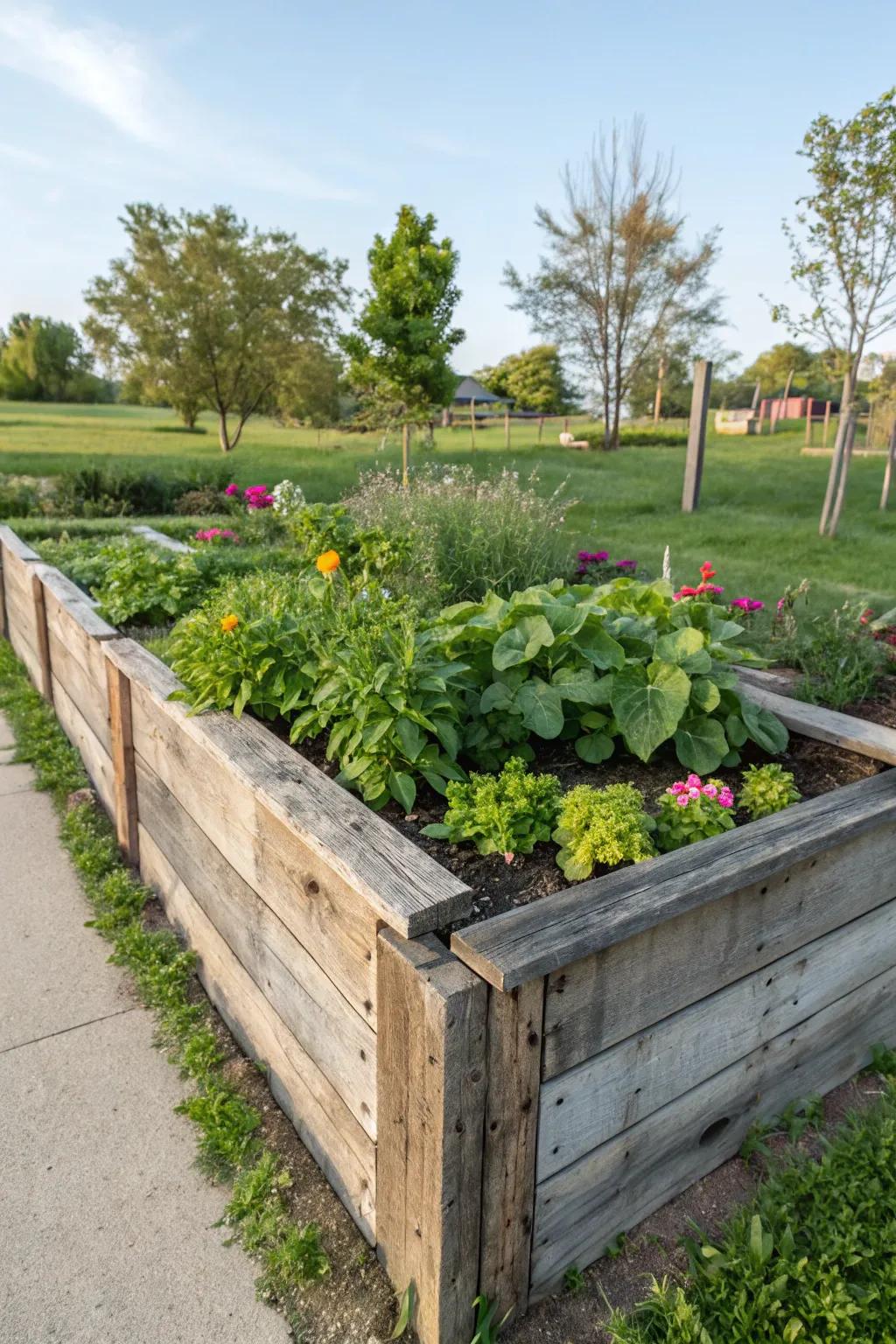
Raised beds are great for gardening with less bending and fewer weeds. I’ve used reclaimed wood to build mine, adding a rustic charm.
A few relevant products:
- Reclaimed Wood for Garden Projects: Transform your garden with rustic charm using affordable reclaimed wood for raised beds.
- Raised Bed Corner Brackets: Easily assemble your raised bed with durable corner brackets, enhancing stability and ease of construction.
- Organic Garden Soil Mix: Ensure healthy growth for your plants with nutrient-rich organic garden soil mix.
5. Add Stepping Stones
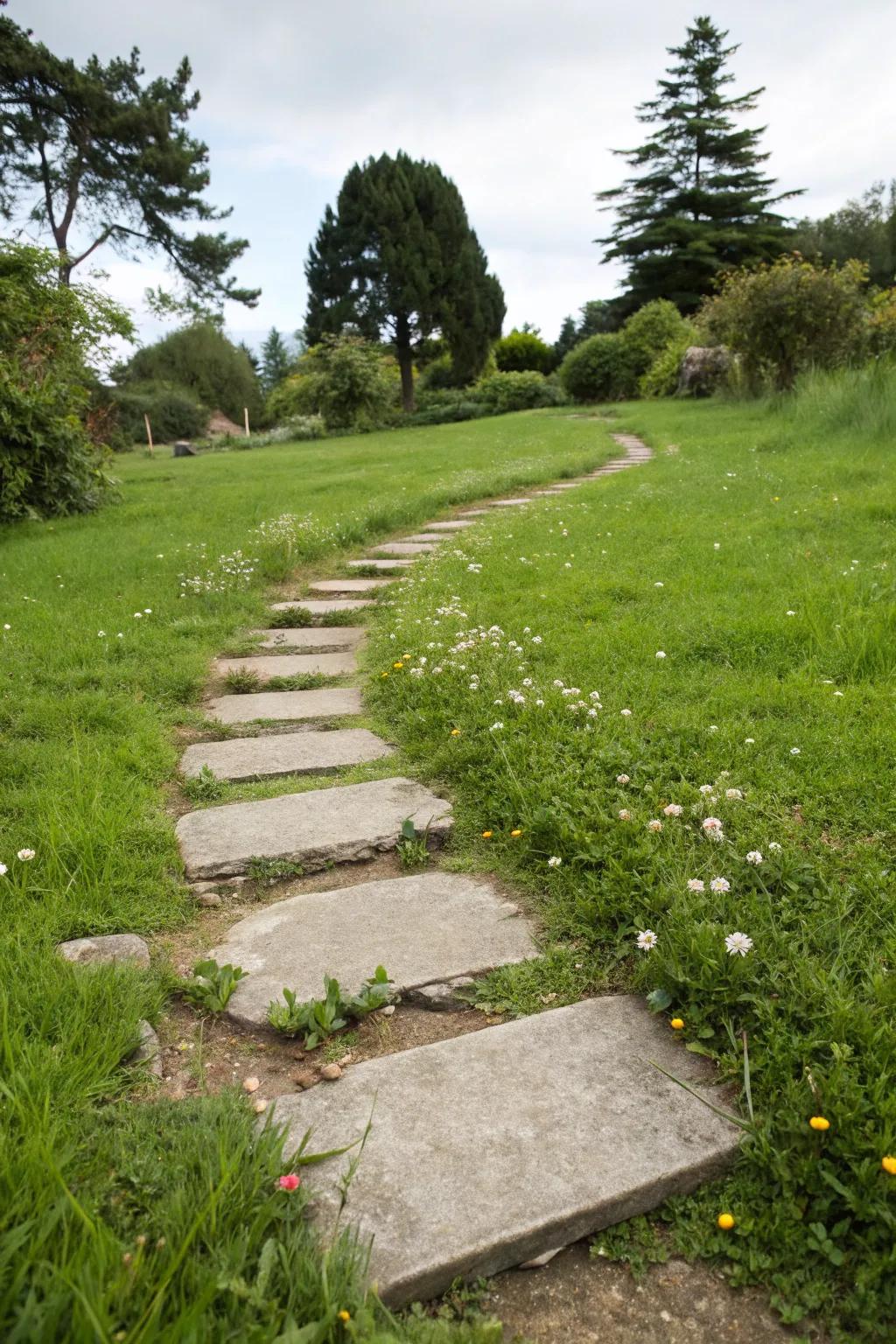
Stepping stones guide visitors through your garden and add a playful element. In my garden, they offer a whimsical path that invites exploration.
Give these a look:
- Natural Stone Stepping Stones: Enhance your garden’s charm with these natural stone stepping stones. Discover enchanting pathways today!
- Decorative Garden Path Stones: Create a whimsical garden path with these decorative stones. Invite exploration in your outdoor space!
- Interlocking Garden Stepping Stones: Design a seamless pathway with easy-to-install interlocking stepping stones. Transform your garden effortlessly!
6. Embrace Container Gardening
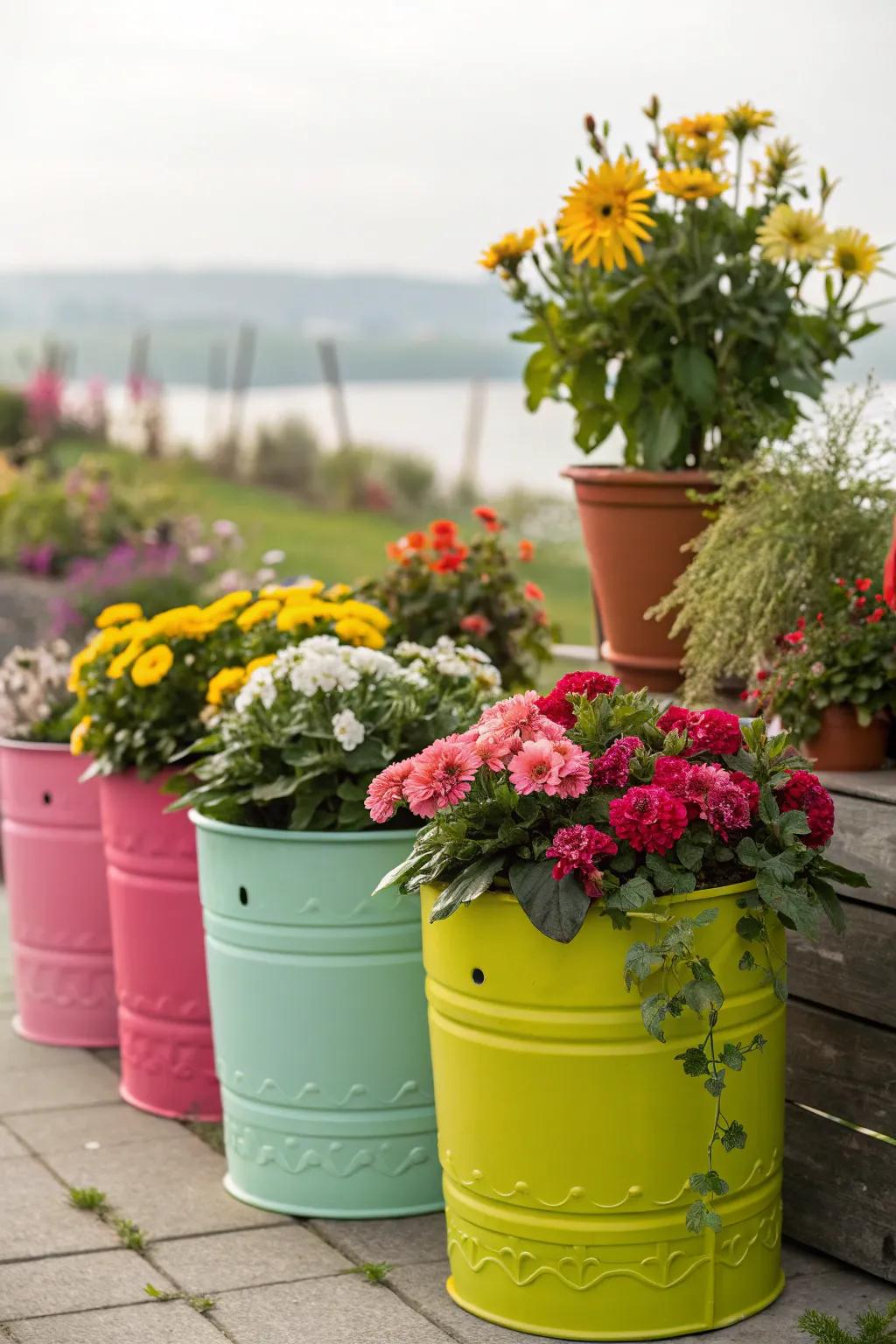
Pots and planters are perfect for adding color and versatility. I love mixing different sizes and colors to create dynamic displays on my patio.
Check these products out:
- Colorful Metal Planters: Transform your patio with vibrant, durable planters that add a splash of personality.
- Ceramic Flower Pots Set: Enhance your garden’s charm with elegant ceramic pots for a classic touch.
- Decorative Plastic Planters: Enjoy lightweight, versatile planters in varied designs for easy and stylish plant arrangement.
7. DIY Water Features
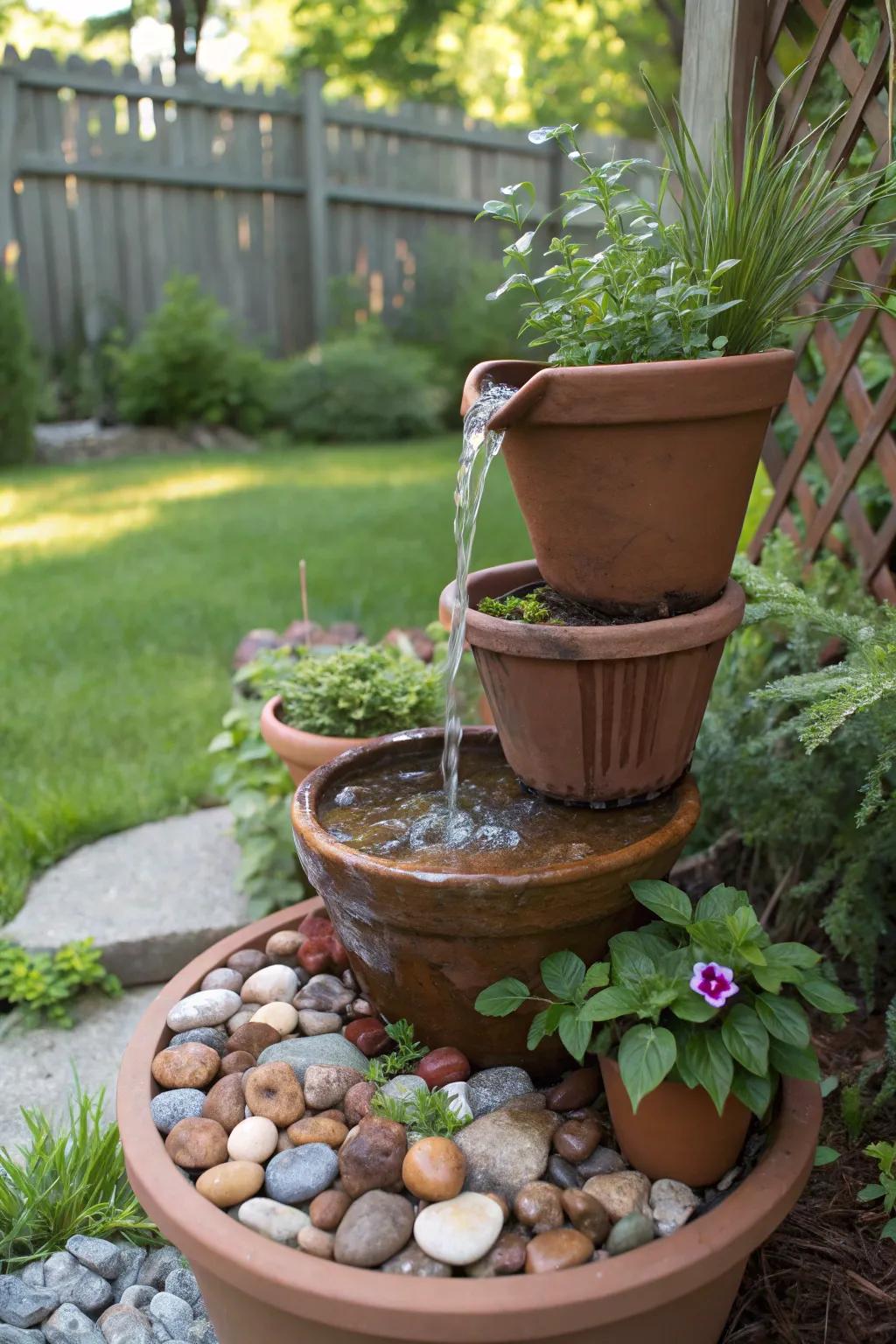
A simple water feature can bring tranquility to your garden without a hefty price tag. I’ve used old pots and a small pump to create a lovely mini fountain.
A few things you might like:
- Submersible Water Pump: Enhance your garden’s tranquility with a reliable and efficient submersible water pump.
- Terracotta Plant Pots: Create beautiful water features using versatile and rustic terracotta plant pots.
- Decorative River Rocks: Add natural charm to your water feature with these smooth and aesthetic decorative river rocks.
8. Define Paths with Gravel or Mulch
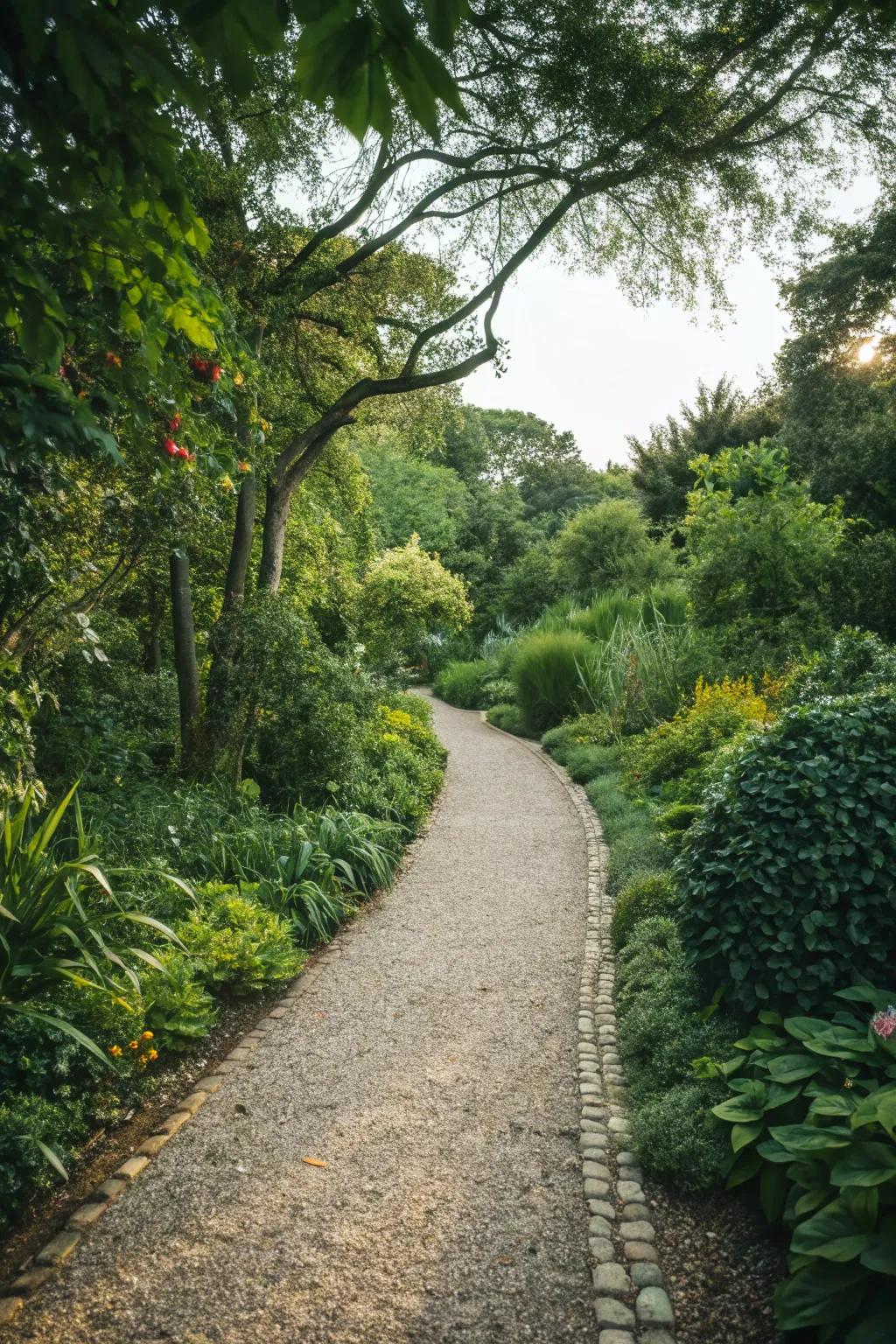
Gravel and mulch are not just affordable, they’re perfect for creating charming pathways. I love how they define spaces and add a rustic touch to my garden.
Useful items to consider:
- Garden Pathway Gravel: Create charming paths with this affordable gravel, perfect for rustic garden aesthetics.
- Wood Mulch Landscaping Chips: Add warmth and texture to your paths using these easy-to-spread wood chips.
- Garden Edging Stones: Define your path edges with stylish stones to enhance your garden’s look effortlessly.
9. Plant Colorful Annuals
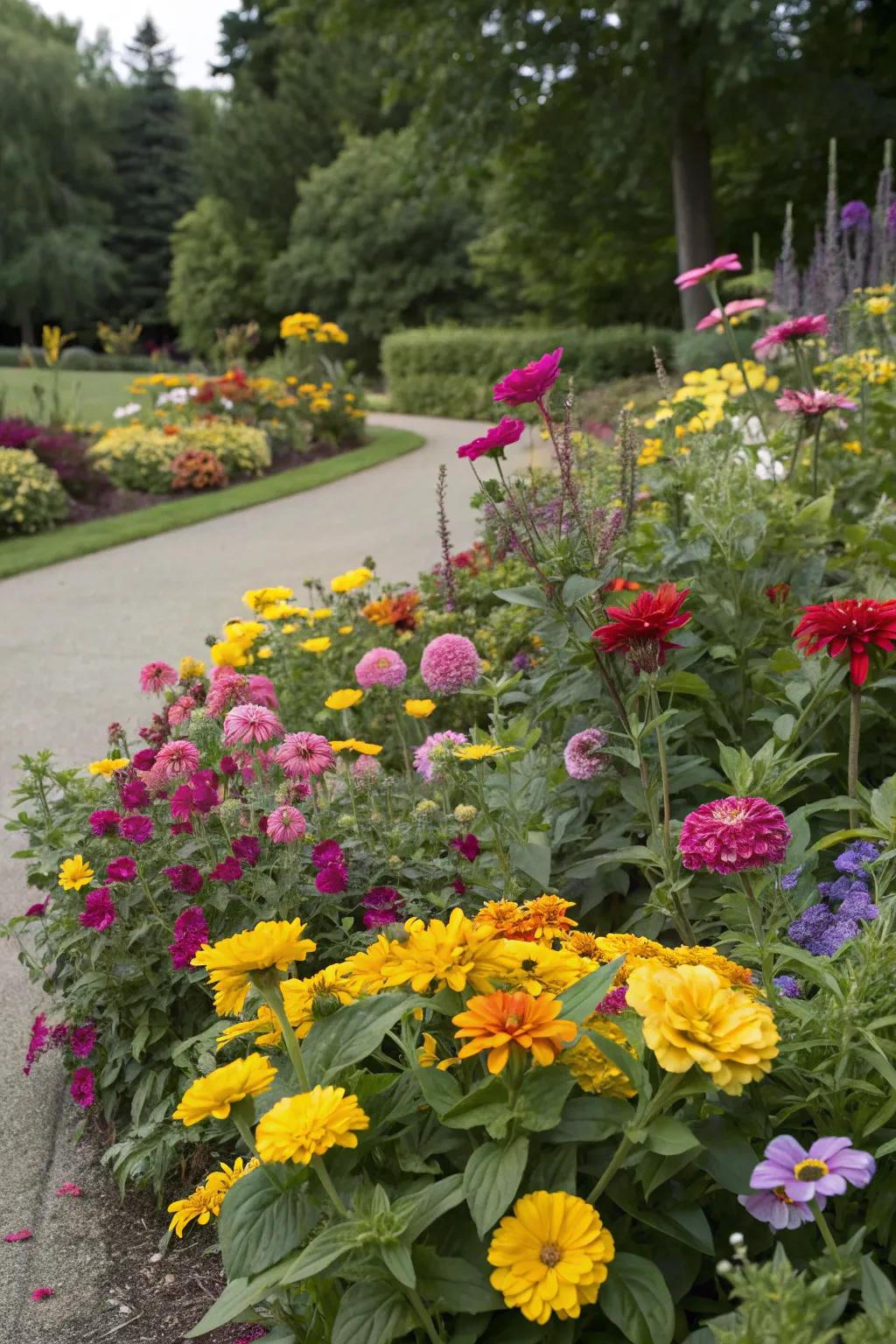
Annuals are perfect for adding vibrant color quickly. I use them to fill gaps among my perennials for a striking seasonal display.
Explore these options:
- Assorted Annual Flower Seed Pack: Brighten your garden instantly with these colorful annual flower seeds, easy and quick to plant.
- Multipurpose Garden Soil: Provide a rich foundation for vibrant annuals with this nutrient-rich garden soil blend.
- Colorful Garden Planters: Add charm to your landscape with vibrant planters perfect for showcasing blooming annuals.
10. Beautify with Ornamental Grass
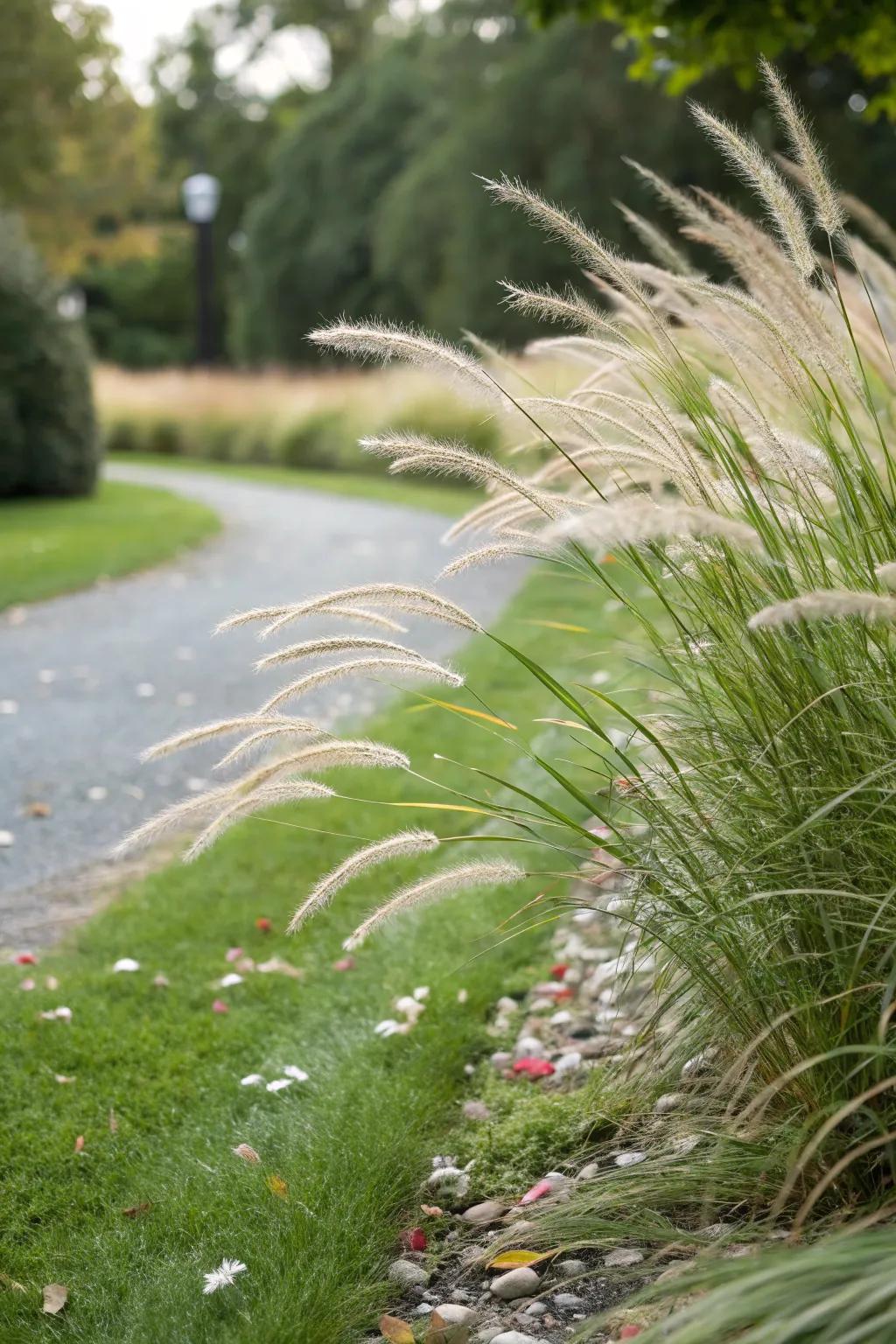
Ornamental grasses add movement and softness. I love how they sway in the breeze, adding a touch of elegance to my garden.
These products might help:
- Pack of Ornamental Grass Seeds: Enhance your garden’s elegance with flowing grass seeds that sway gently in the breeze.
- Decorative Garden Pebbles: Add stylish texture to your pathways with decorative pebbles, enhancing visual appeal.
- Outdoor Solar Garden Lights: Illuminate your ornamental grasses at night with eco-friendly solar garden lights.
11. Construct a Birdbath
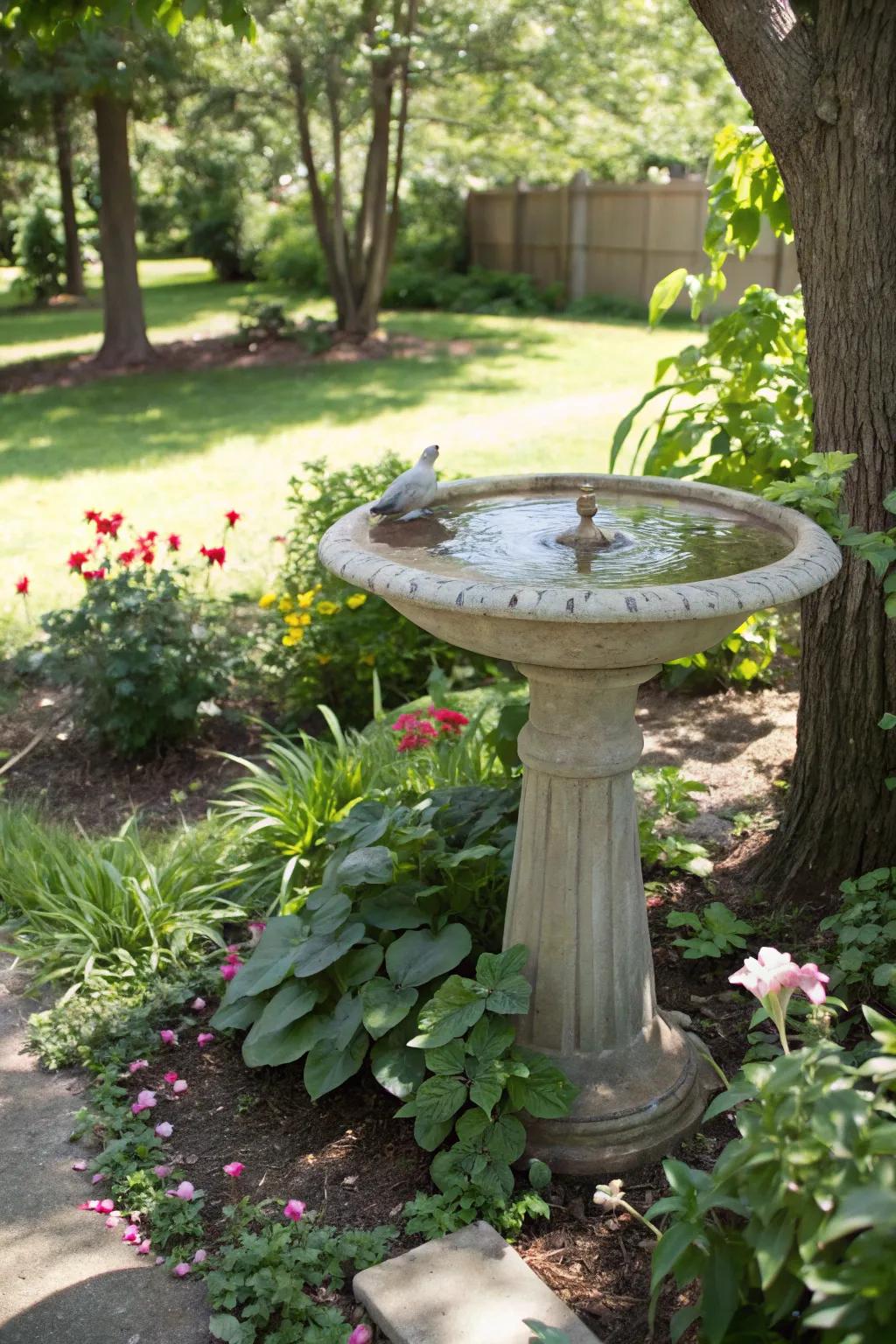
A birdbath invites feathered friends and adds a charming focal point. I’ve crafted one using simple materials, bringing life to my garden.
Try these:
- Decorative Birdbath Bowl: Enhance your garden’s charm with a decorative birdbath bowl, attracting delightful feathered friends.
- Pedestal Stand for Birdbath: Elevate your birdbath with a sturdy pedestal stand, creating a captivating garden focal point.
- Solar-Powered Fountain Pump: Add a gentle water flow to your birdbath with a solar-powered fountain pump for tranquil ambiance.
12. Define Borders with Bricks

Using bricks or stones to edge your garden beds creates a polished look. In my garden, they help keep mulch in place and add a tidy finish.
Some handy options:
- Clay Garden Edging Bricks: Enhance your garden’s beauty with durable clay bricks, creating a sophisticated border effortlessly.
- Decorative Stone Garden Edging: Add elegance and functionality to your garden with decorative stone edging, keeping mulch intact.
- Interlocking Brick Edging Set: Create seamless garden borders with easy-to-use interlocking bricks, offering a polished appearance.
13. Create a Cozy Seating Area
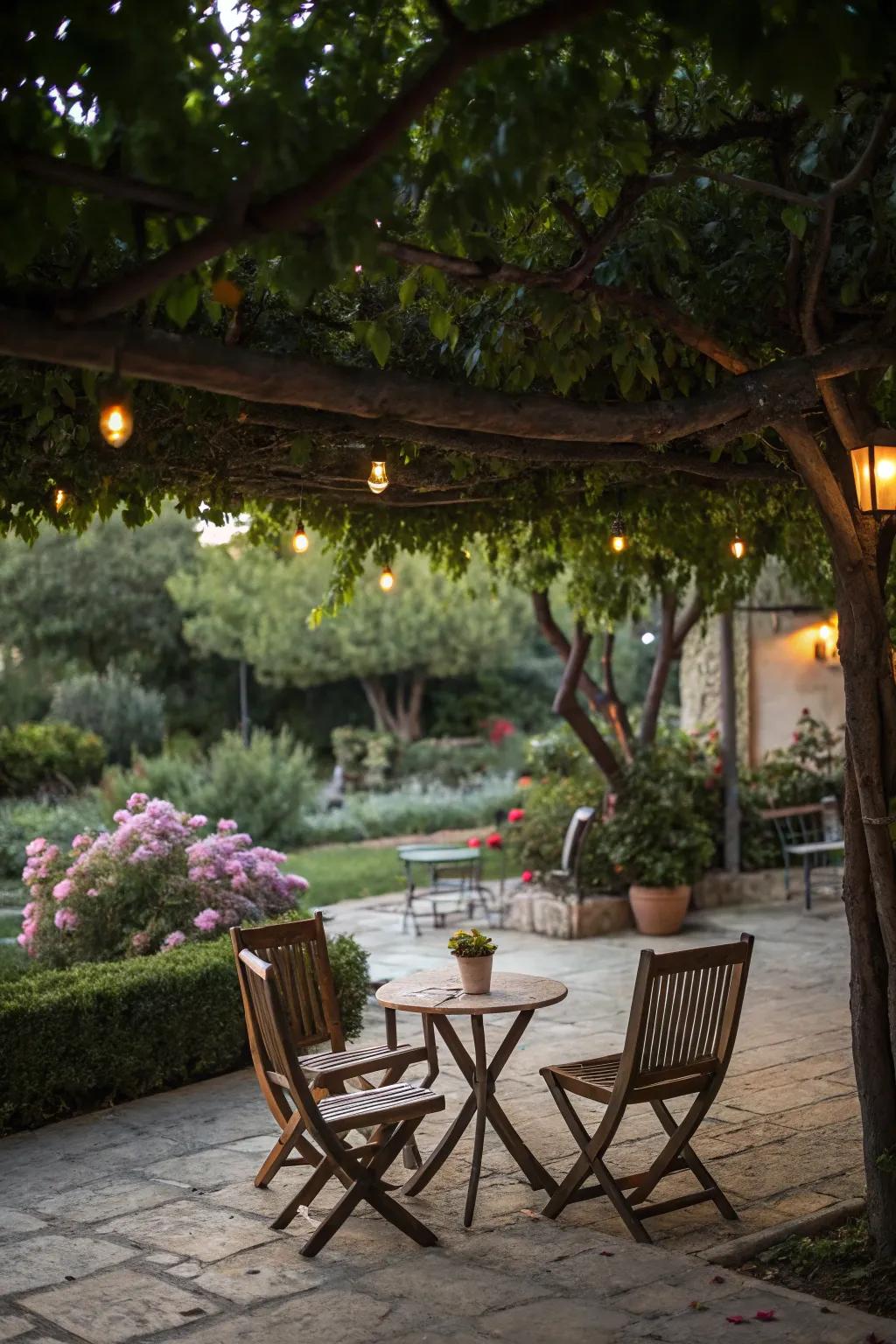
Transform a corner of your yard into a relaxing retreat with simple seating arrangements. I’ve repurposed old furniture to create a cozy nook for morning coffee.
You might like:
- Outdoor String Lights: Enhance your seating area with enchanting string lights for a warm, inviting atmosphere.
- Folding Bistro Set: Easily set up a stylish and compact seating arrangement with a folding bistro set.
- Cushion Covers for Chairs: Add comfort and color to your seats with durable, weather-resistant cushion covers.
14. Install Solar Lighting
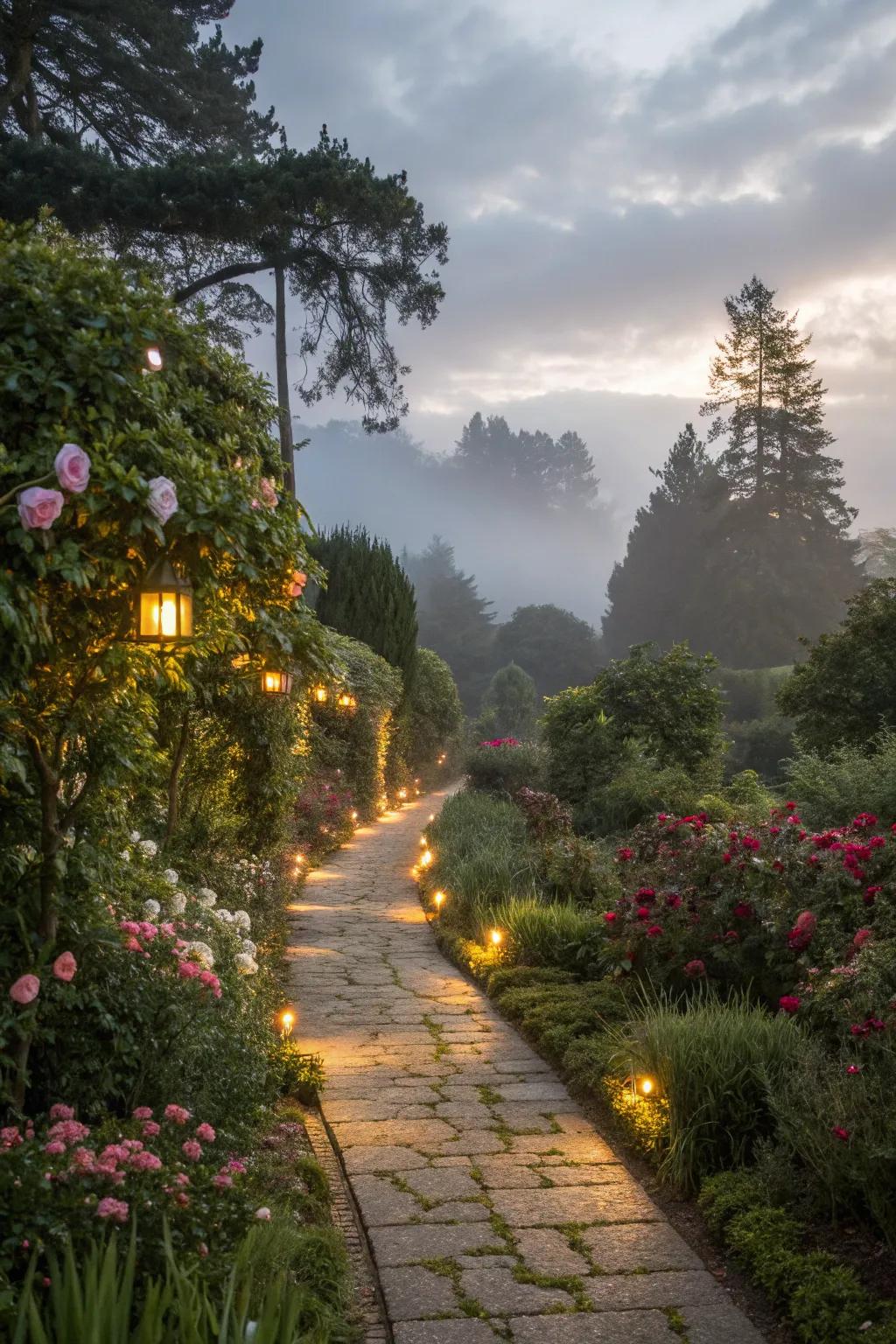
Solar lights provide eco-friendly and cost-effective illumination. I’ve lined my paths with them, creating a magical glow at night.
Check if these fit your needs:
- Outdoor Solar Pathway Lights: Illuminate your garden path effortlessly with energy-efficient solar pathway lights, enhancing nighttime charm.
- Solar Garden Lanterns: Create a mystical garden atmosphere with decorative solar lanterns. No wiring needed for a simple setup.
- Solar Landscape Spotlights: Highlight beautiful garden features with solar spotlights, providing focused lighting without extra electricity costs.
15. Repurpose Old Watering Cans
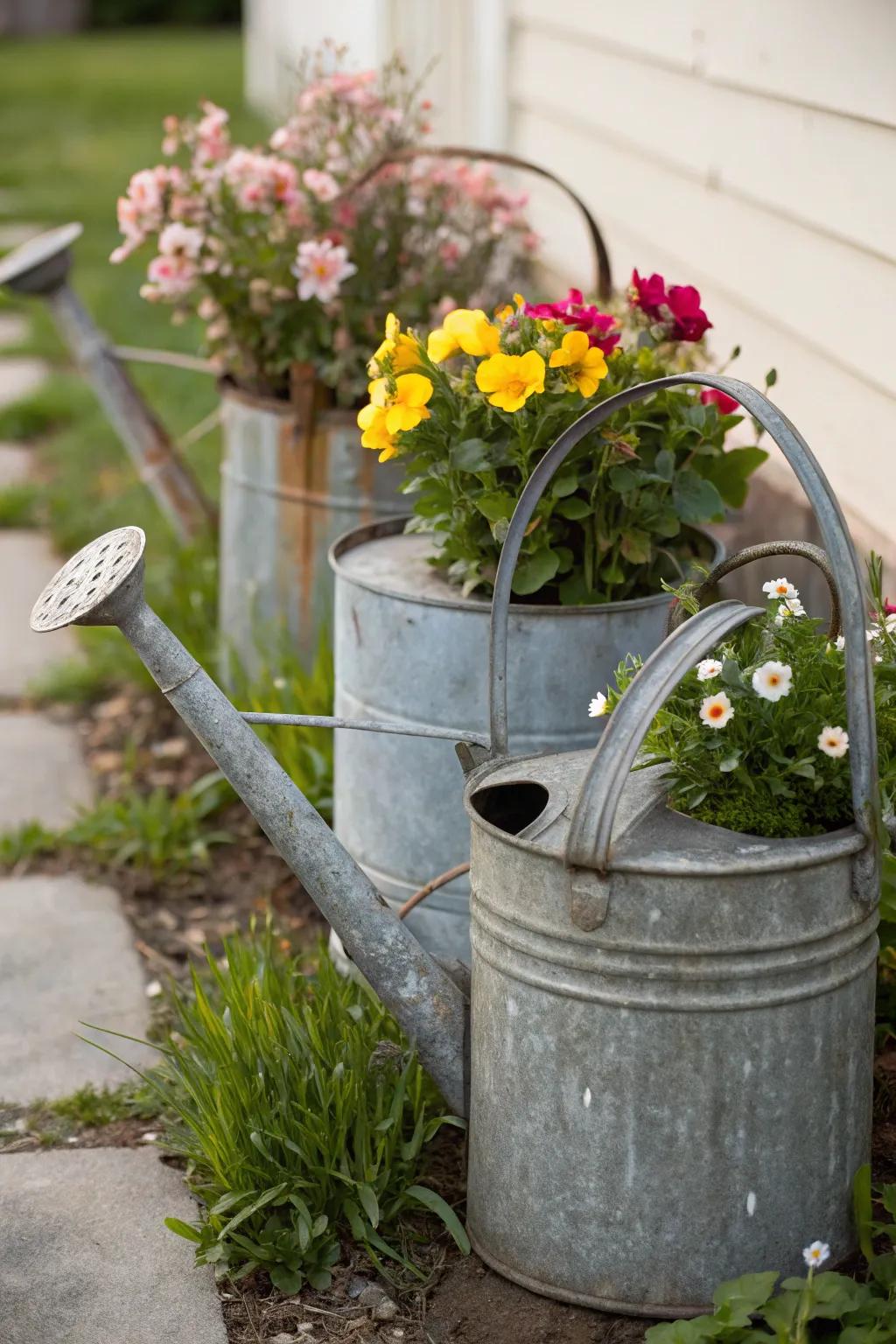
Old watering cans make delightful planters with a vintage touch. I’ve filled mine with blooms, giving my garden a cozy, nostalgic feel.
Possibly handy products:
- Vintage-Style Metal Watering Can: Enhance your garden’s charm with a rustic watering can, perfect for vintage-themed planters.
- Assorted Flower Seed Packets: Fill your watering can planters with colorful blooms using these diverse flower seeds.
- Potting Soil for Outdoor Gardens: Give your plants a healthy start with quality potting soil designed for outdoor planters.
16. Grow a Vegetable Garden
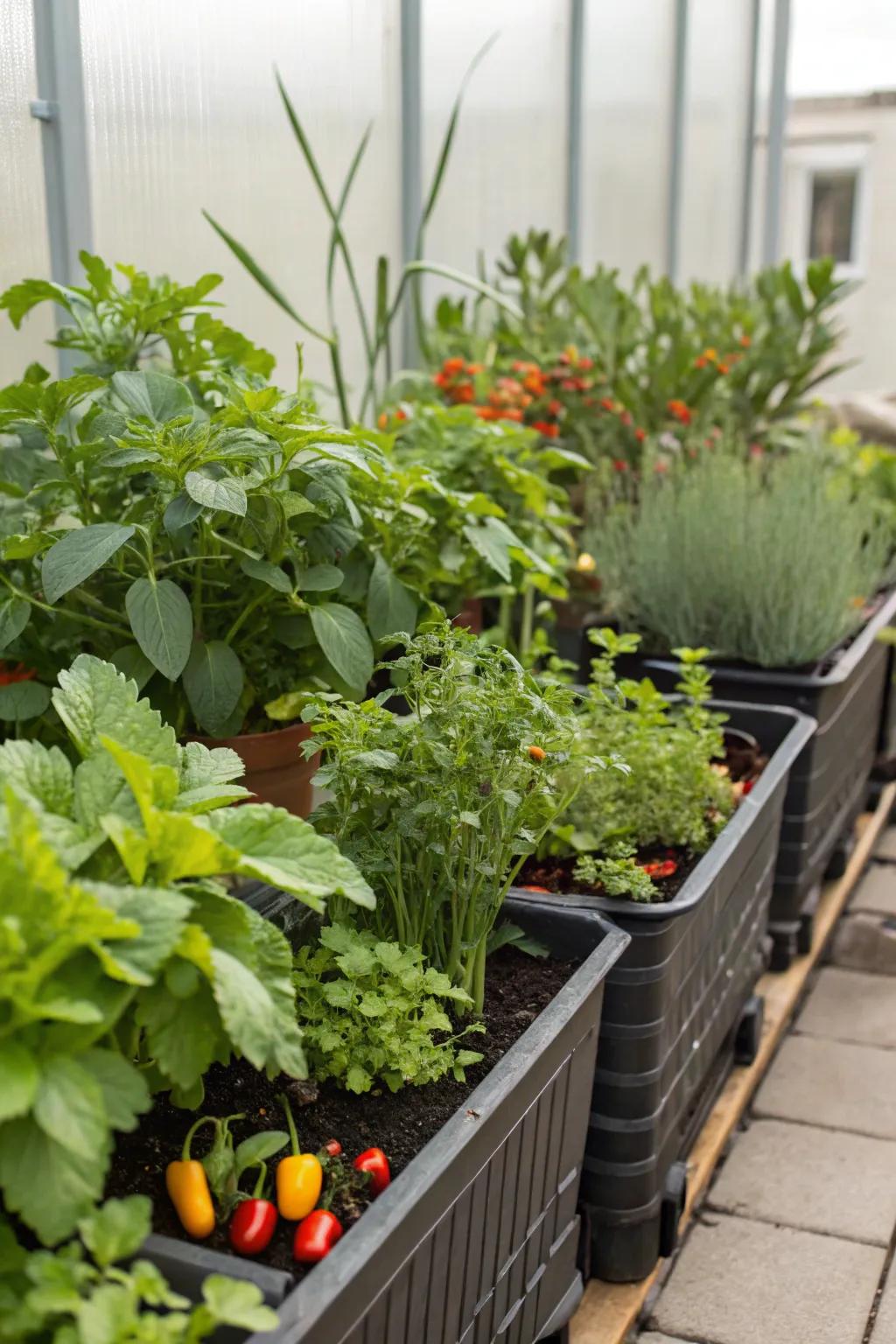
Edible gardens are not only practical but also rewarding. I’ve saved on groceries by growing my own herbs and veggies in containers.
Items that may come in handy:
- Outdoor Vegetable Planters: Elevate your gardening with sturdy planters ideal for any vegetable garden, boosting growth and yield.
- Organic Herb Seed Pack: Kickstart your garden with a variety of organic herb seeds, perfect for fresh culinary flavors.
- Potting Soil for Herbs and Vegetables: Enhance plant health with nutrient-rich potting soil specially formulated for vegetables and herbs.
17. Opt for Seeds Over Plants
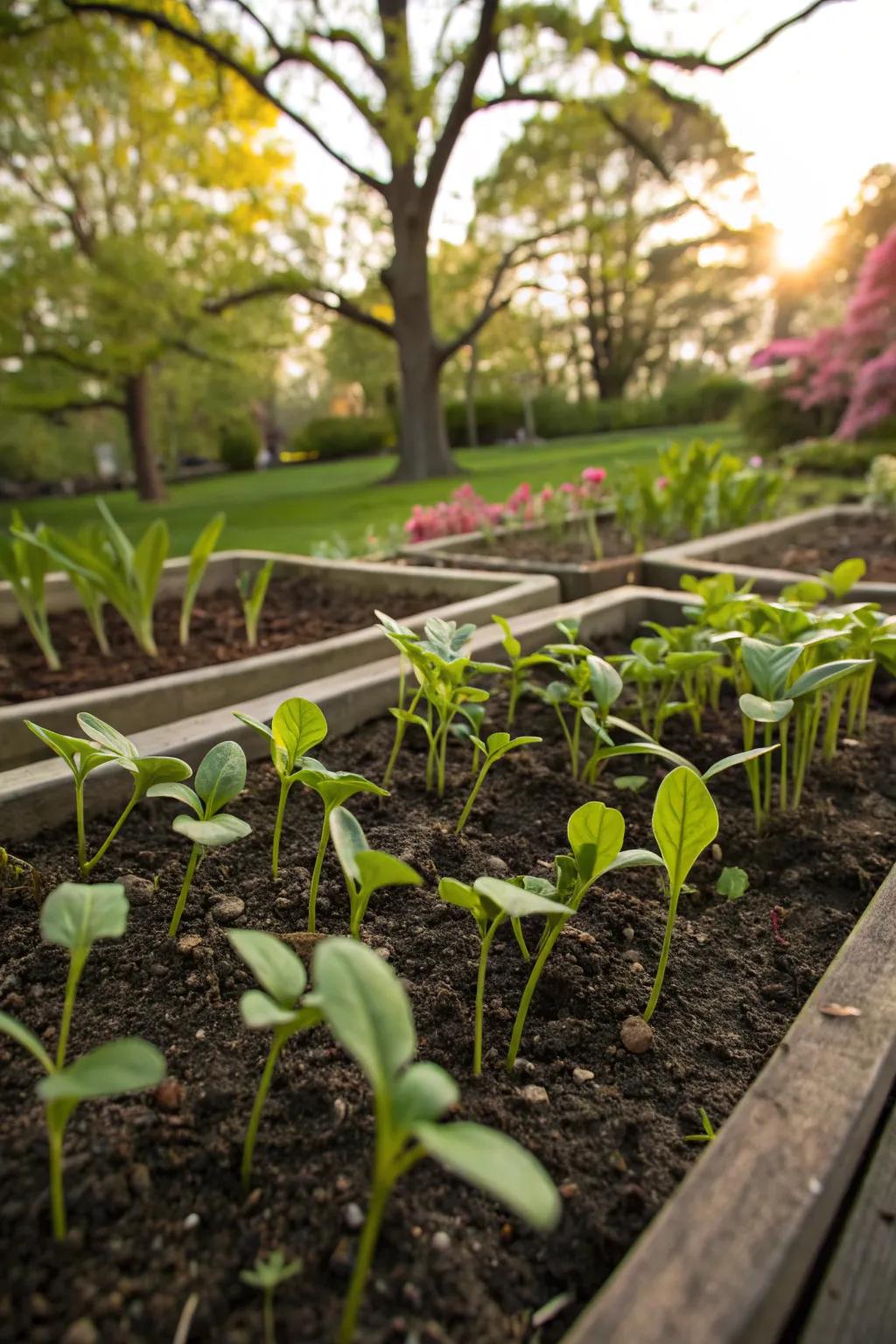
Starting from seeds is an economical way to fill your garden with life. I love watching my garden grow from tiny seeds into a lush paradise.
A few choices to try:
- Vegetable and Herb Seed Pack: Grow a bountiful garden from scratch with this diverse selection of vegetable and herb seeds.
- Organic Potting Soil: Cultivate healthy seedlings with nutrient-rich organic potting soil, perfect for seed starting.
- Seed Starter Kit with Biodegradable Pots: Kickstart your garden with ease using a complete seed starter kit with biodegradable pots.
18. Go Vertical with Wall Gardens
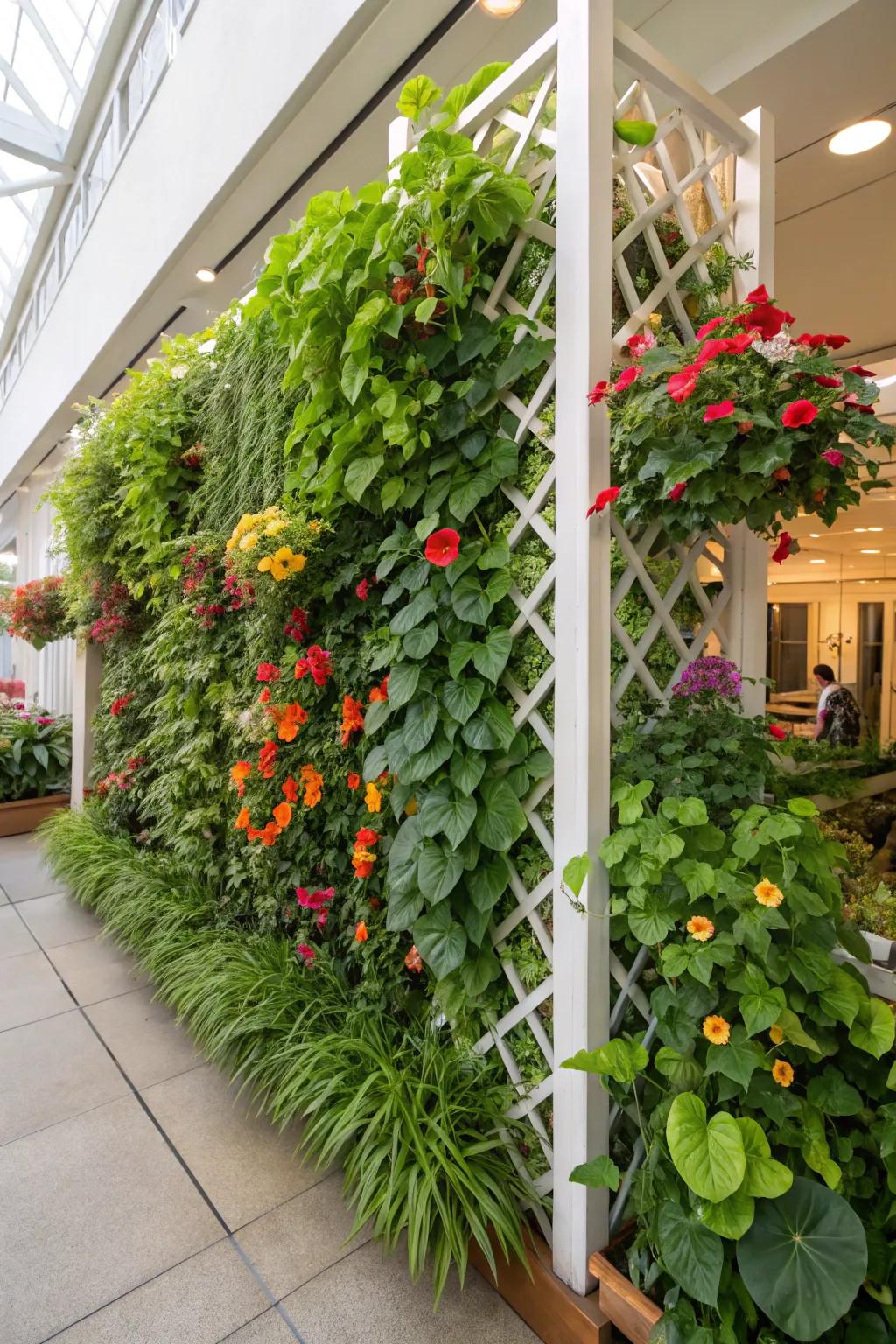
Vertical gardens make the most of limited space and add a lush backdrop. I’ve used a simple trellis to grow climbing plants and herbs.
A few helpful options:
- Expandable Garden Trellis: Transform your space with a versatile trellis, perfect for supporting climbing plants vertically.
- Vertical Wall Planter: Enhance your garden with a multi-pocket wall planter, ideal for herbs and flowers.
- Climbing Plant Support Clips: Secure your plants easily with durable support clips, ensuring healthy vertical growth.
19. Upcycle for Unique Planters
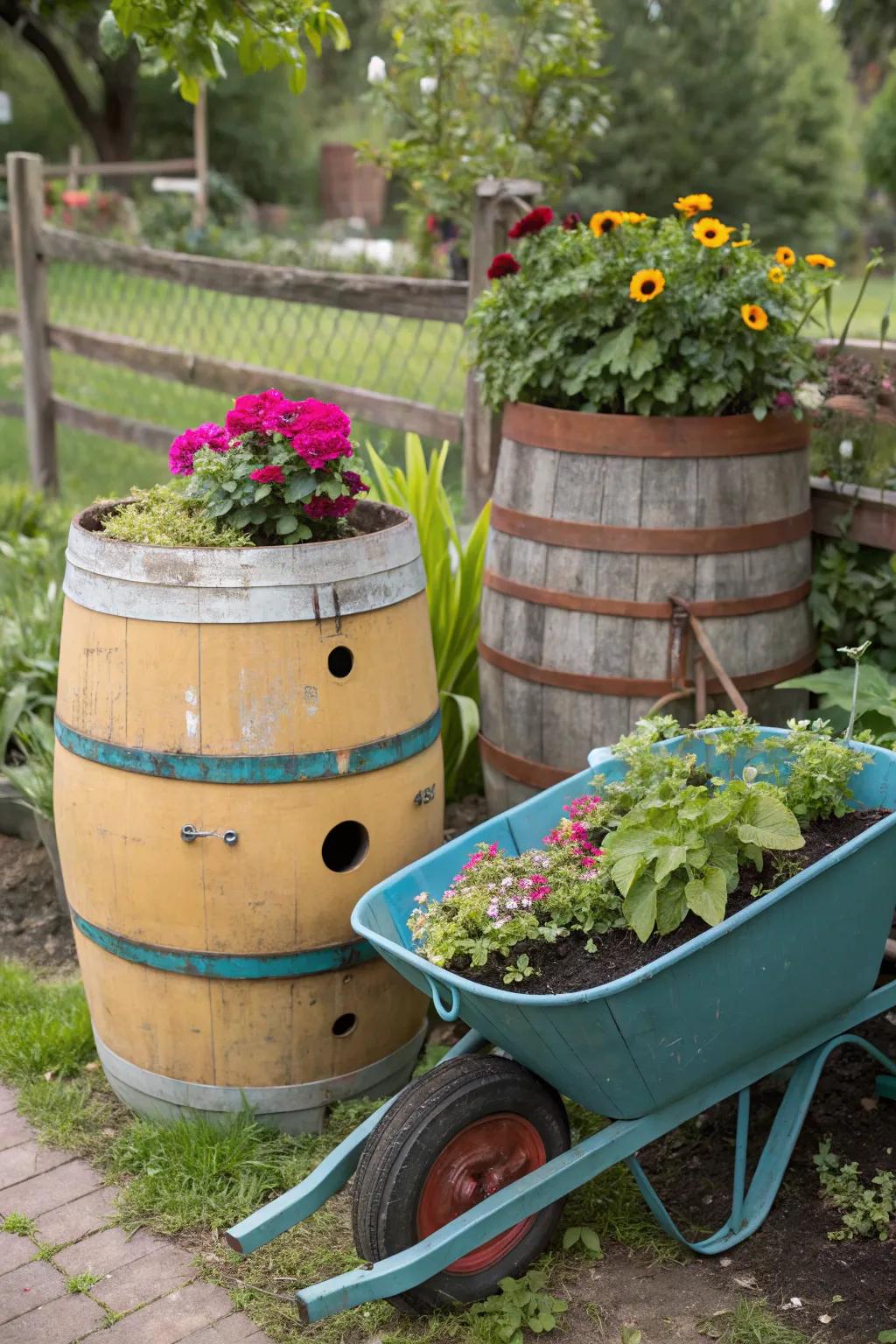
Repurposing items like old barrels or wheelbarrows into planters adds character. I’ve turned vintage finds into focal points that spark conversation.
Consider these options:
- Vintage Style Wooden Barrels: Transform your garden’s look by using vintage-style barrels as charming rustic planters.
- Decorative Metal Wheelbarrow: Add a touch of whimsy with a decorative metal wheelbarrow, ideal for vibrant floral displays.
- Gardening Soil Mix: Enhance plant growth with a high-quality soil mix, ensuring thriving blooms in repurposed planters.
20. Create a Focal Point
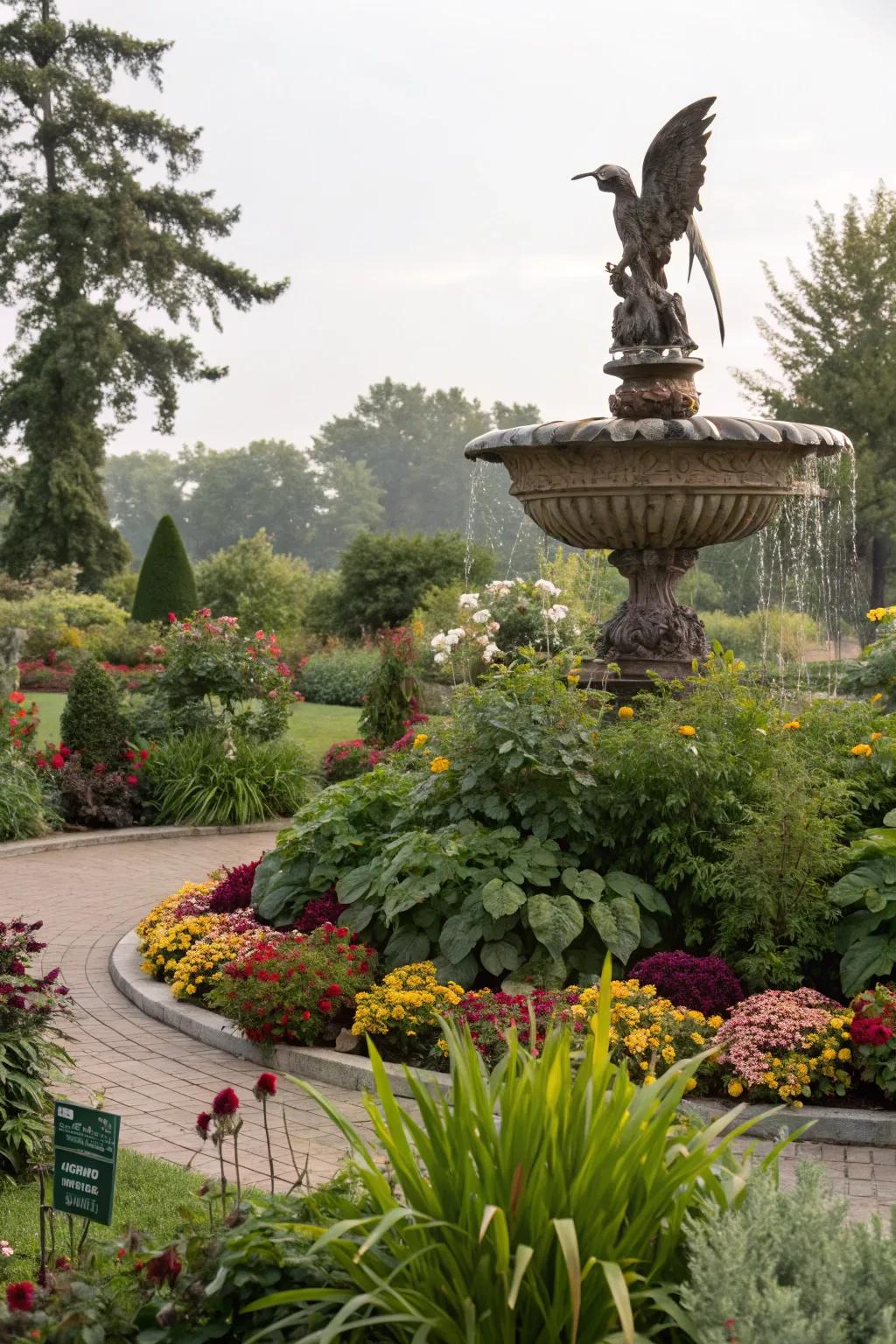
Draw the eye with a standout feature like a trellis or sculpture. In my garden, an old driftwood piece serves as a stunning centerpiece.
Possibly helpful picks:
- Garden Trellis for Climbing Plants: Enhance your garden with a trellis for climbing plants, adding height and visual interest.
- Outdoor Garden Sculpture: Add charm and personality to your garden with a unique outdoor sculpture display.
- Decorative Driftwood Piece: Introduce natural elegance using a decorative driftwood piece as a garden centerpiece.
21. Plant Low-Maintenance Shrubs
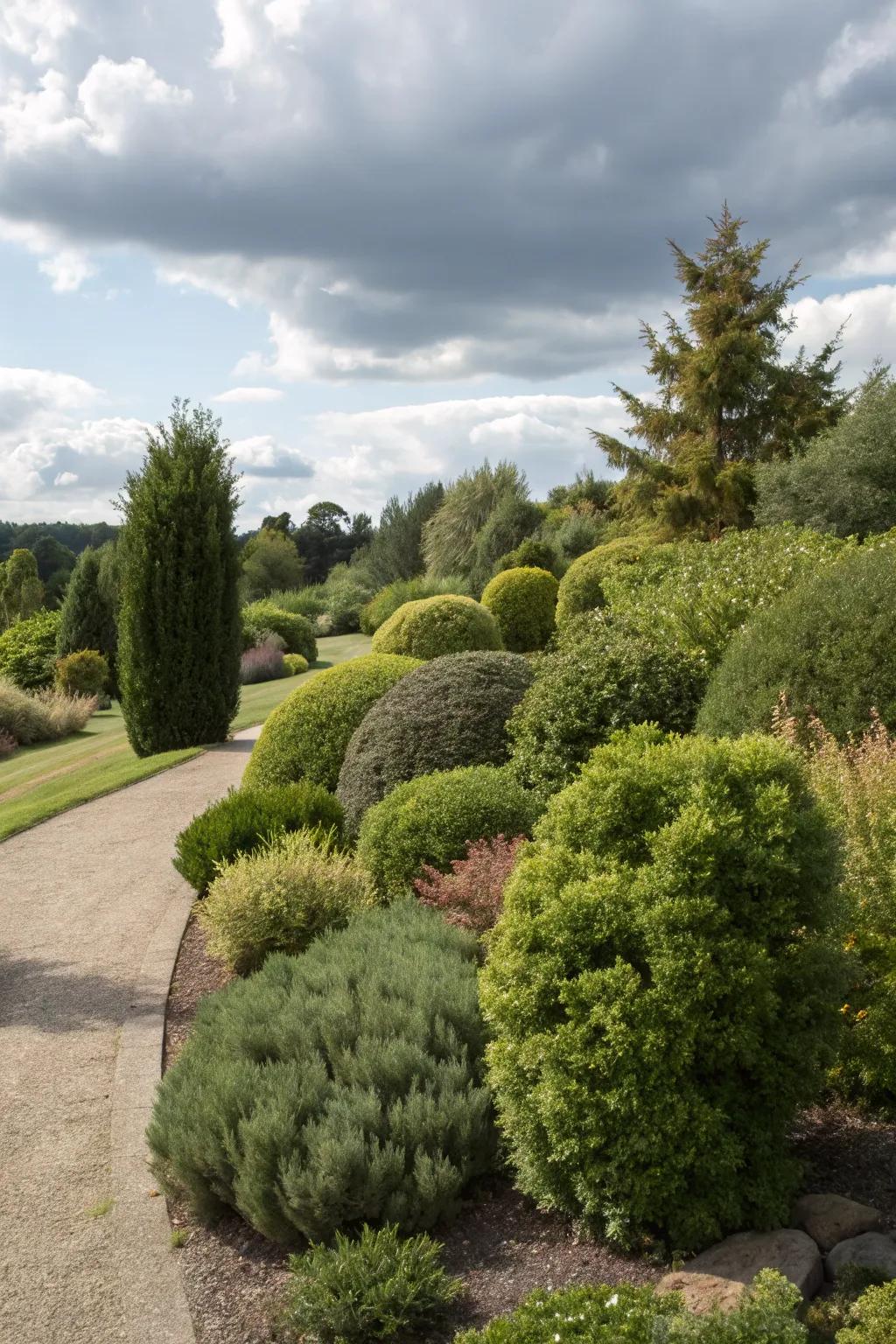
Shrubs and perennials are a smart choice for a vibrant garden that doesn’t require constant care. My favorites are the ones that bloom year after year without fuss.
Might be a good match:
- Low-Maintenance Flowering Shrubs: Enhance your garden with easy-care, vibrant flowering shrubs that thrive year after year.
- Perennial Evergreen Shrubs: Transform your landscape with hardy, evergreen shrubs that require minimal maintenance.
- Shrub Fertilizer for Continuous Blooms: Keep your shrubs healthy with this special fertilizer designed for vibrant, ongoing growth.
